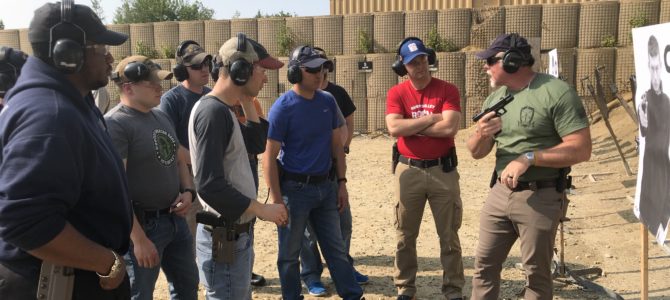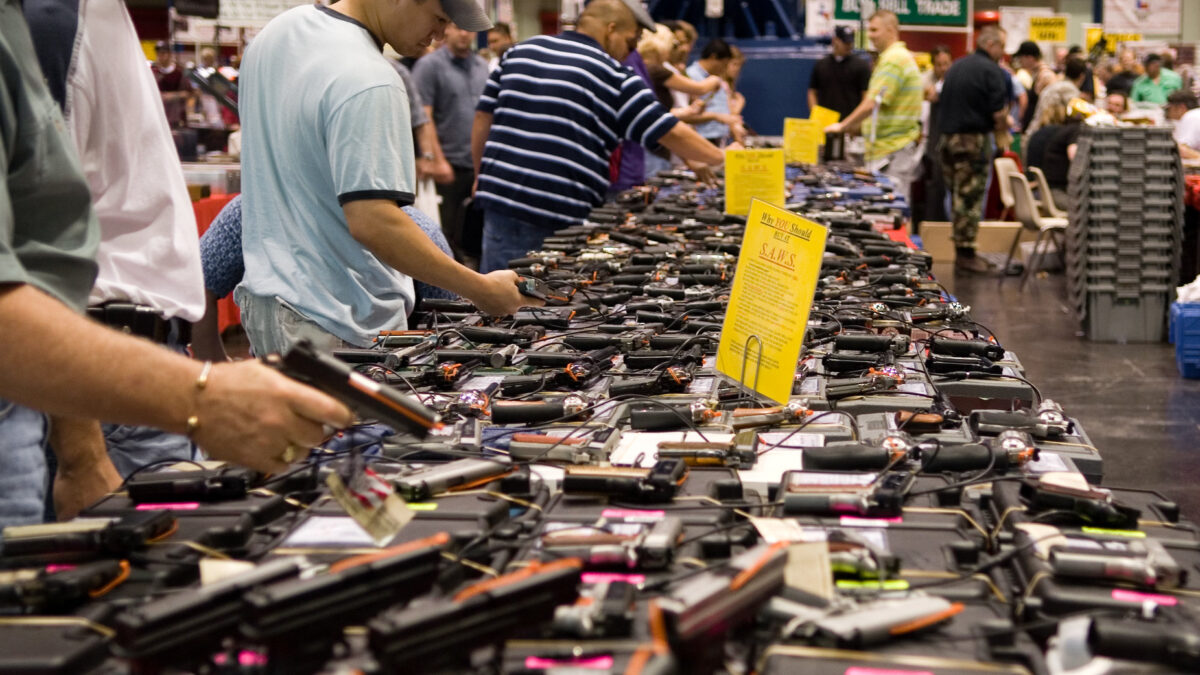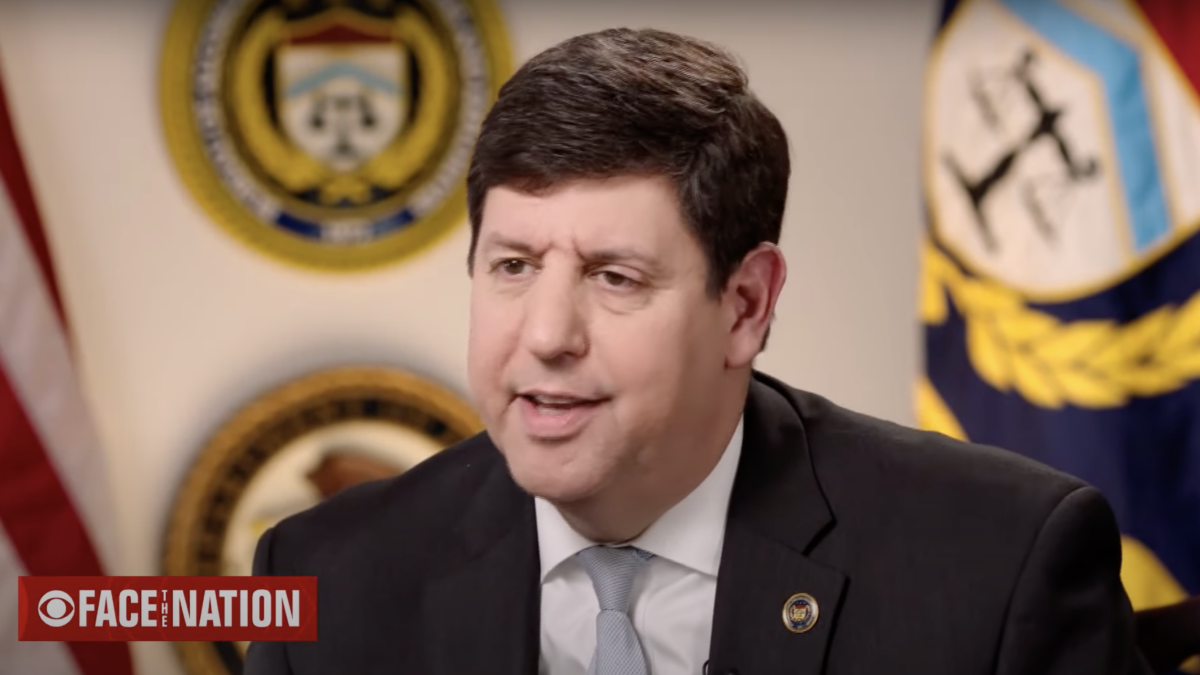
During his presidential campaign, Donald Trump said previous Republicans had made big promises to get votes and failed to deliver, but that he would be different. Appealing to America’s 100 million gun owners, he argued against two elements of Democrats’ civilian disarmament agenda: “universal” background checks, which Democrats hope to transform into a federal gun registry that can be used to enforce gun confiscation, and a ban on semi-automatic rifles Democrats call “assault weapons.”
However, several weeks ago Trump and several Republicans in Congress said they were considering giving in to Democrats on both counts.
For various reasons, perhaps including his waffling on guns, it is not certain that Trump will be reelected in 2020. But if he stops listening to members of his family who support gun control, if the Republican Senate quashes Democrats’ gun schemes, if Trump is reelected, if the Republicans hold the Senate, and if they re-take the House of Representatives—a lot of ifs—he and the Republicans could change federal gun laws for the better.
Aggressively pursuing these changes and explaining to the American people why the changes are warranted would help protect the right of the people to keep and bear arms. By now, supporters of that right should have figured out that they will never win the war to protect it if they remain catatonic when the opportunity to pass good laws exists, then cower when Democrats and the liberal-left media attack in the minutes, hours, and days after a high-profile crime involving a gun.
‘The Best Defense Is a Good Offense’
Consider the decision of the Supreme Court in District of Columbia v. Heller (2008), a case that challenged the District’s bans on handguns, having a gun in operable condition within one’s home (thus preventing its use for self-defense), and carrying a gun within one’s home without a permit (which D.C. would not grant), and which asked the court—for the first time in its history—to expressly state whose right to keep and bear arms the Second Amendment protects.
The court explained at great length why the amendment protects “the individual right to possess and carry weapons in case of confrontation” and “extends, prima facie, to all instruments that constitute bearable arms.” There might not have been a fifth vote on the court for that decision if not for two independent offensive strategies that preceded it by a generation.
The first, which began in earnest in the early 1980s with the research of the late civil rights lawyer Don B. Kates and Second Amendment scholar and attorney Stephen Halbrook, but has since included contributions by dozens of other law professors and constitutional scholars, was a series of law review articles and books that detailed the amendment’s history.
These efforts, many of which are online at the Guncite Second Amendment Law Library and some of which were cited in Heller, proved that the Founding Fathers and Framers of the Constitution and Bill of Rights, and 19th century court decisions and legal commentators, considered the right to arms to be individually held and that such viewpoint continued almost without exception until 20th century activist state and federal judges claimed otherwise. (See Salina v. Blaksley, 1905, contending that the amendment protects a so-called “right” of a state to arm its militia; U.S. v. Tot, 1942, contradictorily contending that the amendment protects a “right” of an individual to bear arms only while on duty in a militia; and the Fifth Circuit’s decision in U.S. v. Emerson, 2001, rejecting both theories in favor of the traditional, individual rights view.)
The second strategy was the National Rifle Association-led campaign for state right-to-carry laws, which provide a fair and reasonable process for people to obtain permits to carry guns for protection away from home (essentially undoing restrictions on carrying that in most cases had been imposed decades earlier). In the early 1980s, only six states had right-to-carry laws. By the time of Heller, there were 42, accounting for three-fourths of the U.S. population. These laws led to a massive increase in Americans’ acquisitions of handguns and a massive increase in the number of Americans carrying handguns for protection away from home, and coincided with a sharp decrease in murders and other violent crimes.
Now, instead of caving, President Trump and congressional Republicans should man up, fulfill their promises, and crush Democrats’ civilian disarmament schemes. Then, if and when the opportunity presents, here are the changes they should make to federal gun laws.
1. Repeal the Gun Control Act’s (GCA, 1968) prohibition on young adults buying handguns.
Adults ages 18-20 can marry without parental consent, raise children, serve in the military, serve on juries, and vote. They also have the right to defend themselves. Raising to 21 the minimum age to buy guns—like Republican Sen. Rick Scott did last year when he was governor of Florida, running for the Senate, and sacrificed young adults’ rights for the sake of his political ambitions—is movement in the wrong direction.
2. Repeal the GCA’s prohibition on buying a handgun from a firearm dealer outside your home state.
Dealers are required to conduct a federal background check on anyone to whom they sell a firearm and the check is the same wherever it originates. Democrats can’t have it both ways, claiming that a background check is effective, but only when a gun buyer is in his or her home state.
3. Repeal or amend the Gun Free School Zones Act.
This law within the GCA prohibits a person from carrying a gun within 1,000 feet of a “school zone” unless he or she has a permit issued by the state in which the school is located. It was struck down by the Supreme Court as a violation of the Tenth Amendment, but was re-imposed by Congress. It probably should be repealed, because it still offends the Tenth Amendment, criminals don’t pay attention to “gun free zones,” and you can’t drive very far in any city or town without being within 1,000 feet of one or another school. However, at a minimum, it should be amended to exempt a person who has a permit from any state.
4. Pass national right-to-carry reciprocity legislation.
Most states already honor most other states’ other states’ carry permits, so going along with “universal” checks—which Democrats want as a stepping stone to gun registration—in exchange for getting Democrats to go along with carry permit reciprocity legislation is not, as some think, a good idea. Nevertheless, drivers’ licenses are good in every state, so firearm carry permits should be too.
Make New York, California, and a few smaller states also dominated by Democrats respect the fundamental right to self-defense like other states do. The legislation should also require all states to make carry permits available to any otherwise eligible person at least 18 years of age.
5. Amend the GCA’s firearm importation law.
This provision requires the Bureau of Alcohol, Tobacco, Firearms and Explosives (BATFE) to approve the importation of only such firearms and ammunition it considers “generally recognized as particularly suitable for or readily adaptable to sporting purposes.”
However, sports are not the reason for which the Second Amendment protects the right to arms. Furthermore, the BATFE has repeatedly misinterpreted every adverb, verb, adjective, and noun of the law’s “sporting purposes” verbiage to ban the importation of various firearms that are useful for defensive and sporting purposes alike. The law should be amended to require the BATFE to approve the importation of any firearm or ammunition of a type that is legal to manufacture in the United States.
6. Amend the GCA’s “armor piercing ammunition” law.
This 1986 law was intended to prevent the sale of handgun bullets made of certain, specific hard metals capable of defeating soft armor vests worn by law enforcement officers.
A problem is that in applying to bullets that “may” be used in a handgun, the law applies to some rifle bullets. For that reason, in 2015—with then-president Barack Obama campaigning for a ban on AR-15s and similar rifles—the BATFE tried to ban M855, the second most commonly used bullet in those rifles. A possible fix would be to reword the law to apply to only hard-metal bullets “of a caliber and type originally designed and intended for use in a handgun.”
7. Repeal the GCA’s prohibition on using imported parts to assemble a semi-automatic rifle.
If it is legal to assemble a firearm with American-made parts, it should be legal to assemble the same type of firearm with imported parts.
8. Repeal the National Firearms Act’s (NFA) restrictions on “silencers.”
Pop music concert-goers may not care about hearing loss, but smart gun owners do. A “silencer” does not eliminate, but at least reduces the noise of gunfire, thereby protecting people’s hearing and making it easier to hear the safety-related instructions of range safety personnel.
9. Repeal the NFA’s restrictions on short-barreled rifles and remove shotguns from the NFA’s definition of “destructive device.”
The NFA was originally intended to restrict concealable firearms, particularly handguns. Yet short-barreled rifles are nowhere nearly as concealable as handguns, which are owned by tens of millions of Americans, and which 42 states respect the right of people to carry concealed away from home. Furthermore, short-barreled rifles are especially well-suited for defensive purposes, thus they are among the types of firearms quintessentially protected by the Second Amendment.
The NFA defines “destructive device” to include explosives, incendiaries, poison gases, bombs, grenades, rockets, missiles, and mines, but also firearms the internal barrel diameter of which exceeds one-half inch, which ends up including most shotguns. Shotguns are exempted only if the BATFE deems them “generally recognized as particularly suitable for sporting purposes.” Again, sports is not the reason people have the right to arms and the BATFE has repeatedly misinterpreted “sporting purposes” to ban politically disfavored firearms, including some shotguns.
10. Change the NFA’s definition of “machinegun” and repeal the 1986 ban on new “machineguns.”
The NFA defines “machinegun” as a firearm that fires “automatically more than one shot, without manual reloading, by a single function of the trigger.” On the one hand, basing the definition upon how a firearm operates mechanically makes sense. If the definition were instead based on how fast a firearm could be fired, Democrats in Congress and the White House could by legislation, or a Democrat president could have the BATFE by regulation, whittle the acceptable firing rate down until we would be back to the single-shot firearms used to win the War for Independence
However, the NFA’s mechanism-based definition ends up lumping a lightweight, selective-fire rifle like an M4, an effective individual defense weapon, in the same category as a G.E. Mini-Gun, a heavy, multi-barreled, motorized Gatling Gun that can fire 6,000 rounds of ammunition in a minute and which is usually bolted to an airplane, helicopter, or some other motorized platform.
One possible solution would be to amend the NFA’s definition of “machinegun” to exclude rifles, amend its definition of “rifle” to include rifles capable of firing more than one shot with a single function of the trigger, excluding those intended to be crew-served weapons, and exclude “rifles” from the 1986 ban.
Additionally, to make it harder for the BATFE to misinterpret the law to define “machinegun” to include semi-automatics, the definition of “machinegun” could be amended to exclude “any semi-automatic firearm and any firearm not designed or modified to fire without its trigger resetting between shots.”
Be Careful What You Wish For
Attempts to change federal gun laws for the better should be approached with caution, however. If the necessary bills were introduced, Democrats would attempt to amend them for the worse before final passage and they might succeed.
That’s what happened before Congress approved the otherwise favorable Firearms Owners’ Protection Act of 1986. Without a roll call vote, and with many House members not on the floor, Democrats snuck through an amendment by Bill Hughes (D-N.J.) to prohibit new fully-automatic firearms, laying the groundwork for their campaign against semi-automatic firearms two and a half years later.
Yet for supporters of the right to arms there seems no other choice but to adopt an offensive strategy. Without victory, they will eventually suffer defeat.









